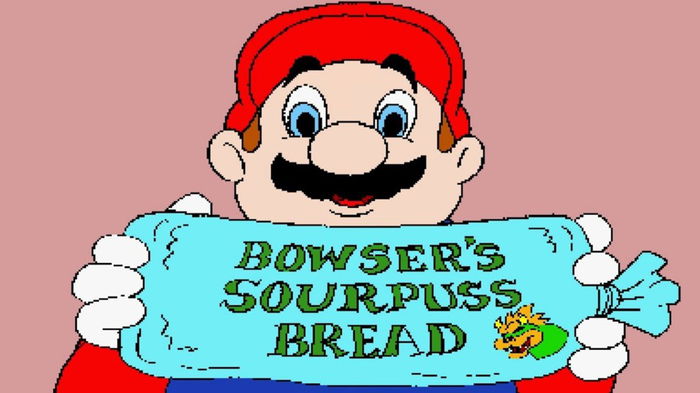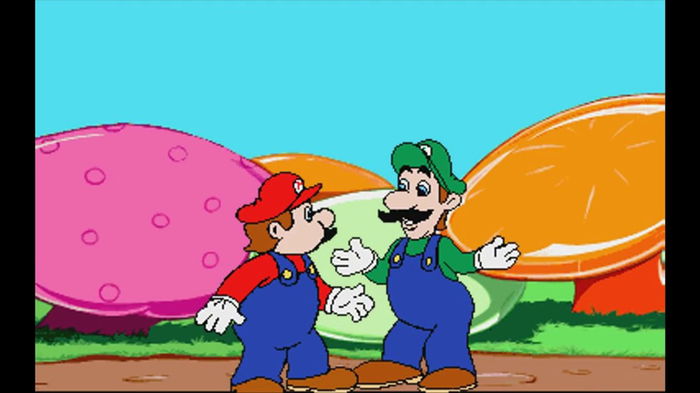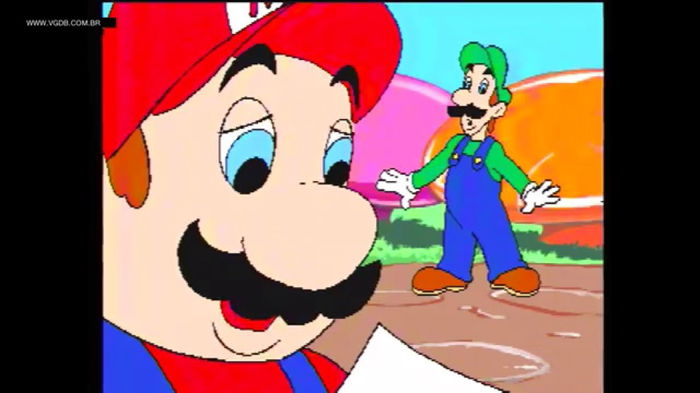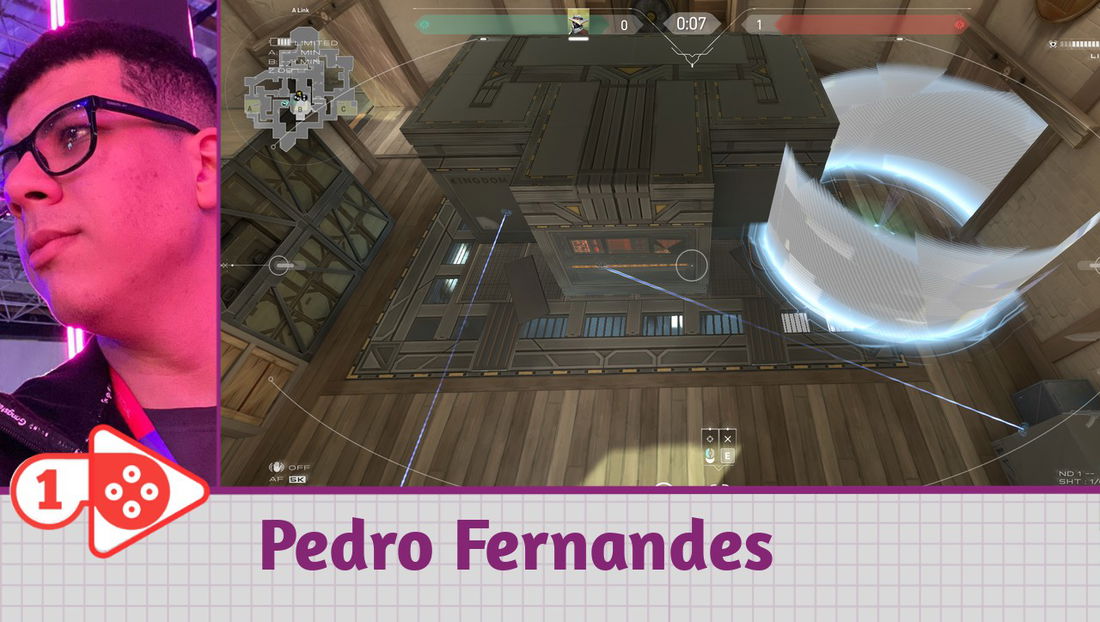When we think of the Super Mario franchise, what comes to mind are colorful worlds, precise jumps, magical power-ups and the familiar soundtrack by Koji Kondo. But there is a strange chapter, almost erased from history, that Nintendo itself rarely mentions: Hotel Mario, released in 1994 exclusively for the CD-i console, from Philips. It's the only game in the Mario franchise not directly developed or supervised by Nintendo.
In this article, we'll look behind the scenes of this "anomaly", the reasons that led to its creation, the bizarre circumstances of the CD-i console, the impact of the game, why it’s considered a disaster, and, above all, why Hotel Mario continues to be one of the greatest curiosities in the history of video games.

The Strange History of the CD-i and Nintendo
It all starts in the late 1980s. Nintendo, after the huge success of the NES and the Super Nintendo, began to explore the future of video games with CD-ROM media. The idea was simple: take advantage of the greater capacity of CDs to create better, richer experiences, with more audio, video, and interactivity.
Initially, Nintendo partnered with Sony to create a CD-ROM peripheral for the SNES. The project was called "Play Station" (yes, with space) and was well advanced. But contractual disagreements and an attempt by Sony to gain excessive rights over Nintendo's properties caused the Japanese company to abruptly cancel the agreement in 1991, which, ironically, would result years later in the creation of Sony's PlayStation, one of Nintendo's biggest rivals to this day.
After the breakup, Nintendo sought another partner to continue the CD-ROM peripheral project: Philips. The agreement between the companies was sealed, but it proved equally short-lived. Nintendo definitively abandoned plans to release a CD player for the SNES, but allowed Philips to use some Nintendo characters in games for its new console: the Compact Disc-Interactive, or CD-i.
This point in the contract would seal the fate of one of the most embarrassing moments in the history of the Big N.
The CD-i: A Console That Never Should’ve Existed
The CD-i was launched in 1991 by Philips as a multimedia entertainment system. The company marketed it as a player for interactive movies, educational games, and “edutainment” products. It was expensive, had an unfriendly interface, and had a horrible remote control. Even so, Philips attempted to enter the gaming market as a competitor to the SNES and Sega Genesis.
To this end, they began developing games that took advantage of Nintendo's character licenses granted under the contract. There’ve been three games made in The Legend of Zelda franchise (Link: The Faces of Evil, Zelda: The Wand of Gamelon and Zelda’s Adventure) and only one Mario game: the infamous Hotel Mario.
Contrary to popular belief, Nintendo had no direct involvement in any of these projects. It merely granted the rights to use the characters for a limited time. Development was entirely handled by Philips and contracted studios in the case of Hotel Mario. Development was handled by Fantasy Factory, a small American team that was clearly not prepared to handle such an established franchise.

What Is Hotel Mario, Anyway?
Released in 1994, Hotel Mario is a platform game with a strange idea: Mario and Luigi must break into seven hotels built by Bowser and his sons, the Koopalings, and close all the doors on each floor to proceed.
Yes, doors.
The objective of the game is simple (and ridiculous): the player traverses floors of a hotel, jumping from platform to platform, closing all the doors while avoiding enemies and trying not to die. Each hotel has several "floors," or "levels," and each requires the player to close all the doors before time runs out or they’re defeated.
The game mixes arcade elements with a slow pace and unresponsive controls. The gameplay is repetitive, the collision detection is flawed, and the level design is unattractive. But none of this is as criticized as the infamous animated videos that are part of the experience.
The Cutscenes: An Animated Horror Show
Hotel Mario is remembered, or rather, eternally mocked, for its animated cutscenes. Since the CD-i used CD media, the developers thought it would be a good idea to include animated videos to tell the story. They hired a cheap animation studio in Russia to produce these scenes, which look like something out of a low-budget 1980s cartoon.
The animations are clunky, with awkward movements, poor lip-syncing, washed-out colors, and art direction completely out of keeping with Mario's classic look. But worst of all is the script: the dialogue is bizarre, full of nonsensical phrases and forced jokes. Mario and Luigi speak in a caricatured way, trying to simulate an Italian-American accent in an exaggerated and almost offensive way.
Phrases like "Nice of the princess to invite us over for a picnic, eh Luigi?" or "All toasters toast toast" have become eternal memes. Today, these cutscenes are a classic of internet meme culture, which is perhaps the most positive part of the game.
Commercial Failure and Nintendo's Reaction
Hotel Mario was an absolute commercial failure. It sold few units, was harshly criticized by the media, and was ignored by most gamers. The reception was so negative that Nintendo immediately distanced itself from the game, making no official mention of it in the following years.
Shigeru Miyamoto, Mario's creator, has stated in interviews that he doesn’t consider the game part of the franchise's canon. For Nintendo, Hotel Mario is a misstep, a mistake resulting from a poor contractual decision. And although the game officially used the company's characters, they were never referenced in any other game in the franchise.
It's no wonder that Hotel Mario has never been re-released in any collection, online store, or backwards compatibility service. For all intents and purposes, it's as if it never existed.

Why Did Nintendo Let This Happen?
Many fans wonder how Nintendo, renowned for its strict quality and intellectual property control, allowed something like this to happen. The answer lies in the time the contract was made: the early 1990s.
At that time, the company was still learning to navigate the business world. When Nintendo ceded the rights to Philips as part of an attempt to compensate for the cancellation of the CD-ROM peripheral, it had no idea how creative (and disastrous) the Dutch company would use them.
Furthermore, Nintendo itself probably didn't expect the CD-i to be taken seriously as a gaming platform. It treated Philips' projects as irrelevant and, therefore, failed to closely supervise them. It was a mistake that served as a lesson: since then, the company has never ceded its intellectual property without complete control.
The Cult and the Meme
Interestingly, Hotel Mario hasn't been completely forgotten. On the contrary: in recent years, it has gained notoriety online as a "so bad it's good" title. YouTubers, streamers, and game historians revisited the title with mocking tones. The cutscenes became endless sources of memes, remixes, reaction videos, and satire.
On forums and subreddits, Hotel Mario is discussed as a "junk gem," a kitschy relic that, despite everything, is entertaining precisely because of its badness. There's even a nostalgic demand for re-releases, emulators, digital preservation, and even fan ports. It's as if the game has transcended its mediocrity and become part of pop culture through its bizarreness.
Playing Today: Is It Worth It?
If you're morbidly curious, it's worth trying Hotel Mario via emulation. The game itself is functional but utterly monotonous. The gameplay is repetitive, the difficulty is poorly calibrated, and the design is completely uninspired. In half an hour, you'll probably see everything the game has to offer, but the cutscenes—oh, they're worth the play.
Watching Mario and Luigi talk like characters from a poorly made parody is hilarious, to say the least. There's something fascinating about failure. And Hotel Mario is one of those cases where the failure is so complete that it becomes iconic.
Lessons from History: Creative Control and Brand Protection
The main lesson Nintendo learned from this episode is clear: never again outsource its franchises without full oversight. Since then, the company has protected its IPs with almost obsessive fervor. Any licensed product today undergoes rigorous quality screening, creative oversight, and contractual requirements.
Even on the rare occasions when Nintendo allows outside studios to work on its characters (such as Ubisoft's Mario + Rabbids or Brace Yourself Games' Cadence of Hyrule), it’s heavily involved in the process.
Hotel Mario helped shape this culture of control. It was a misstep that served as a warning, and perhaps that's why the company never again allowed Mario or Zelda to leave the house unsupervised.

Conclusion: A Bizarre, But Important Piece of Gaming History
Hotel Mario is an "anomaly" in the franchise. It's a bad game, made by a company that didn't know how to handle the legacy it held, released on a forgotten platform, with poor controls and disastrous artistic direction. And yet, it's part of Mario's history. A bizarre chapter that reminds us that not even the world's biggest franchises are immune to mistakes.
Today, in an era where Mario is synonymous with quality and nostalgia, Hotel Mario remains a curious, almost comical reminder that even icons can fall... and rise again.
No matter how much Nintendo tries to erase this episode, it still exists. And, in a way, it's comforting to know that even Mario has had his bad days.














— Comments 0
, Reactions 1
Be the first to comment